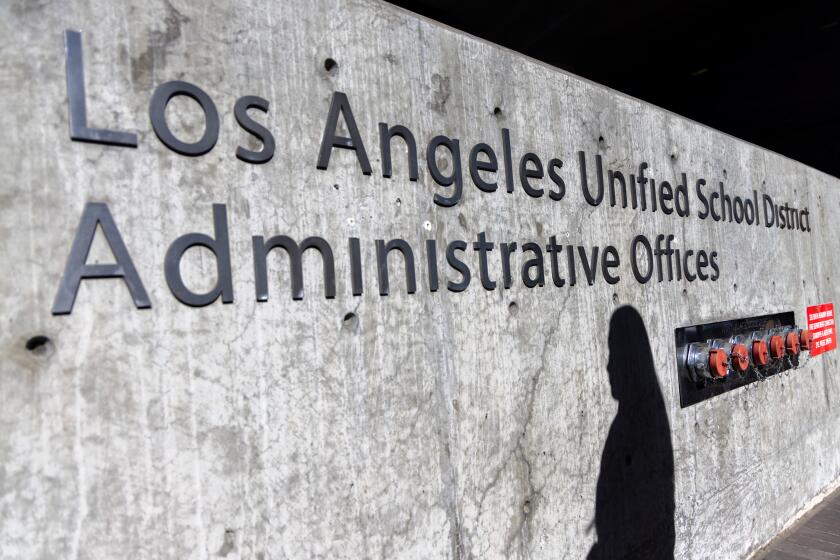Remember Al Qaeda? They’re baaack
‘AL QAEDA,” President Bush declared confidently in October, “is on the run.” The extremists, he said, had “played their hand.” The masterminds of the organization had been “brought to justice.”
But just as we underestimated Al Qaeda before 9/11, we risk making the same mistake now. Although Al Qaeda is often spoken of as if it is in retreat — a broken and beaten organization incapable of mounting attacks, its leadership cut off, living in caves somewhere in remotest Waziristan — the truth is that the organization is not on the run but on the march. It has regrouped and reorganized from the setbacks it suffered during the initial phases of the global war on terrorism and is marshaling its forces to continue the epic struggle begun more than 10 years ago.
Rather than being degraded to the point that it can threaten only softer, more accessible targets like hotels and mass transit, Al Qaeda is very much sticking with its classic playbook of simultaneous, spectacular strikes against even hardened objectives. In other words, we have more to fear from this resilient organization, not less.
Ongoing investigations increasingly suggest that recent terrorist threats and attacks — the foiled 2004 plan to stage simultaneous suicide attacks in the United States, the 2005 suicide bus and subway bombings in London and the August 2006 plot to blow up 10 planes over the Atlantic — were all coordinated in some way by Al Qaeda and not by homegrown terror groups.
Consider what we have learned since the London bombings. Initially, British authorities concluded that the attacks were the work of disaffected British Muslims, self-radicalized and self-selected and operating purely within the country. We have subsequently learned, however, that the cell’s ringleader, Mohamed Sidique Khan, and a fellow bomber visited Pakistani terrorist camps between late 2004 and early 2005 and met there with Al Qaeda operatives.
In addition, following the London attacks, a reliable source working for Britain’s security service recognized Khan from news reports and claimed to have seen him at an Al Qaeda camp in Afghanistan in 1999 or 2000.
The London bombings’ pedigree is familiar. Exactly a year earlier, British and American authorities had disrupted a plot by a London-based Al Qaeda cell to carry out simultaneous suicide attacks on the New York Stock Exchange, the Prudential Center in Newark, N.J., and the headquarters of the International Monetary Fund and the World Bank in Washington. The trail again led to Pakistan.
And this summer’s plot to simultaneously bomb U.S. airliners was foiled after arrests in Pakistan again led British and U.S. officials to another British terrorist cell planning to attack American targets.
Rather than “Al Qaeda R.I.P.,” we face an Al Qaeda that has risen from the grave. It has been able to adapt and adjust to the changes imposed on its operations by the U.S.-led war on terrorism and reestablish its command and control over international terrorism from the sanctuary it has established in Pakistan’s North Waziristan.
Just last month, this alarming development produced a dramatic reversal in the Bush administration’s public assessment of the Al Qaeda threat. In contrast to long-standing White House claims, the annual threat assessment presented by outgoing National Intelligence Director John D. Negroponte to the Senate Select Committee on Intelligence painted a disquieting picture of a highly resilient terrorist movement that, he said, is cultivating stronger operational connections to affiliates throughout the Middle East, North Africa and Europe.
Al Qaeda’s stunning resurrection, before the very eyes of American military forces stationed across the border in southern Afghanistan, begs the question of how the most powerful country in the world can launch a six-year, no-holds-barred, global war on terrorism — at great cost to its pocketbook and international standing — only to find the main target of these Herculean efforts still alive and kicking.
In retrospect, it appears that Iraq blinded us to the possibility of an Al Qaeda renaissance. The United States’ entanglement there has consumed the attention and resources of our country’s military and intelligence communities — at precisely the time that Osama bin Laden and other senior Al Qaeda commanders were in their most desperate straits and stood to benefit most from this distraction. What’s more, even as we took solace in the president’s argument that we were “fighting terrorists over there, so that we don’t have to fight them here,” Al Qaeda was regrouping.
Pakistan is both the problem and the solution to the most salient terrorist threat still directed against us. Al Qaeda and its Taliban allies could not function without the passive connivance of Pakistani authorities. Moreover, agreements concluded over the past two years between President Pervez Musharraf and the restive tribes along the Afghan border have assured Al Qaeda the noninterference with its activities that enables it to thrive. At the same time, the pivotal role played by Pakistan in the disruption of major attacks and the arrests of low-level plotters shows how dependent the U.S. remains on even this partial cooperation.
Defeating Al Qaeda requires, foremost, that our assessments and analyses be anchored firmly to sound, empirical judgment and not blinded by conjecture and wishful thinking. Second, we need to refocus our attention and efforts on Pakistan and Afghanistan, where, in the months after 9/11, Al Qaeda was indeed on the run. Third, Al Qaeda cannot be defeated by military means alone because it relies on propaganda and radicalization.
Accordingly, the U.S. needs a strategy that better combines the tactical elements of systematically destroying and weakening Al Qaeda’s capabilities alongside the equally critical imperatives of countering the resonance of that movement’s message and breaking the cycle of terrorist recruitment and replenishment that has both sustained and replenished Al Qaeda.
More to Read
Sign up for Essential California
The most important California stories and recommendations in your inbox every morning.
You may occasionally receive promotional content from the Los Angeles Times.









